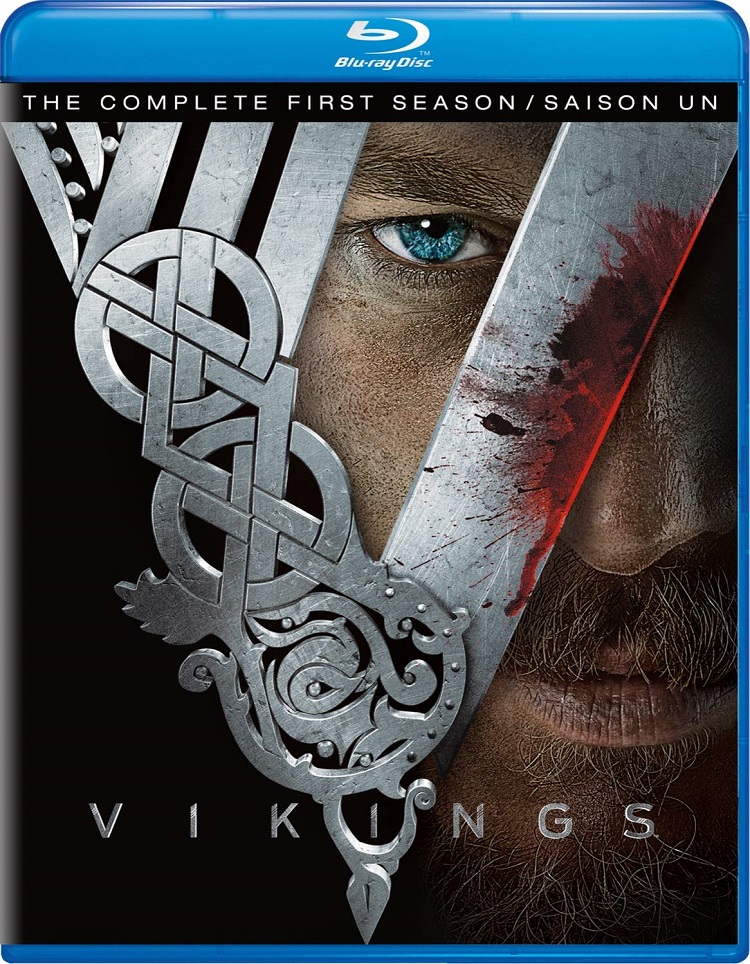
The images that are conjured by the words “History Channel scripted series” are not too exciting. It makes one think of men in fake beards and faker costumes standing around tables, making speeches about important things that are going to happen, like those Civil War TV-movies that occasionally come about, where it feels like all the participants already know the outcome of the battle, and the war, before it has even begun. Vikings, happily, is not that. It is not perfect television, but it’s a real, modern show. That means it looks good, it has an intricate political plot, and it has the confidence to try and be about something other than people playing dress-up.
The show dramatizes the sudden explosion of Scandinavian invasion into England in the late eighth century. In a small Earldom near the coast, Ragnar Lothbrok has a dream, to defy his Earl and take a small crew west instead of east, towards lands that only exist in rumors. Aided with some fancy (for the time) navigational tricks, Ragnar reaches England, and begins his reign of terror on Northumbria, a kingdom that was one of four that ruled over England at the time.
When the Vikings invade, the show reveals its true strength. The invasion happens midway through the second episode. The Vikings have been the audience’s perspective characters the entire time. Ragnar has been the protagonist, fighting against the odds to achieve his dream. Typical hero stuff. Then, when the Vikings come to the first building they find in Northumbria, a monastery, they set about brutally murdering every human being they can find. The few monks they do not kill they capture as slaves, including a Norse-speaking former missionary called Athelstan. The jarring nature of the sudden brutal violence against innocents shows just what Vikings has in mind: a dispassionate examination of who and what these terrifying men from the north were.
By and large, Vikings succeeds in this, almost despite its storytelling. Being a modern television show, it is heavily serialized (except when it isn’t) and features complex character dynamics – though the characters being Vikings, these complex dynamics are usually resolved with violence. But it is often lawful violence. The Vikings were not mindless savages that existed to terrorize other nations. They had their own complex system of laws and cultural norms. Vikings is at its best when it is showing how these norms predicate the Vikings behaviors and attitudes.
What is most striking is the predominance of religion in their attitudes. Staying in good with Odin is of primary importance to all of the characters. One old man begs to be taken out on the next raid, even if he’s sure to be killed. He wants to die in battle to be assured a place in Valhalla. With the introduction of the Norse-speaking priest, an interesting contrast is struck between his Christian and the Norse world-view…or it should be. It is one of the disappointments of the series, that while the contrast between the religions is teased as a subject, it is delved into with no depth. After the Vikings share their own creation stories, Athelstan comes up flat-footed when asked about his own view.
This is a monk. An eighth-century monk with no TV shows about Vikings or internet pornography to distract him. He would know, and likely be able to vigorously defend his own views about Christianity and his place in it. It seems, rather, the creators weren’t all that interested in discussing Christianity, because that’s not as fun as watching a bunch of giant blonde men bang axes on shields and seek death in battle. In a few hundred years, Sweden is officially Christianized – at least nominally. In the end the Christians won. That seems beyond the imagination of the creators of this series.
But Vikings is not strictly historical. Ragnar Lothbrok himself is a man of legend, who might not have existed. The Vikings fight in the presence of a few shieldmaidens (including Ragnar’s wife, Lagertha) – and shieldmaidens themselves are likely purely legendary. The show’s story is a mix of ancient legend, historical reality, and TV tropes. One of the best scenes of the series involves both of the former, and none of the latter – at the second landing in Northumbria, the Vikings are met by a small squad of troops, who try to discern the Vikings’ attitudes. Only Ragnar speaks some of the Northumbrian’s language, and while he and the captain are trying to establish some sort of rapport, Ragnar’s men are arguing behind him. It’s a small scene, but looks like something that could have happened – two groups of men, meeting in the ancient worlds, struggling to understand each other, hoping that the wrong word or gesture won’t lead to combat (spoiler: it does. The show’s about Vikings.) And when the Vikings finally fight, it is an eruption of brutality that makes them seem otherworldly to even these trained soldiers.
Scenes like this make the show worthwhile, despite the show’s glacial pace and occasional lapses in historical imagination. It is generally competently acted, and the violence, of which there is plenty, is brutal, exhausting, and feels real. Dramatically, the show is average. Things happen, though few real surprises after that initial spurt of brutality that makes the audience question their commitment to the protagonists. But in its attempt to come to an understanding of a familiar yet still alien culture Vikings succeeds.
About the disc: Vikings is an attractive show, especially when showing the mountains and rivers of Scandinavia (which is actually Ireland standing in for Scandinavia. Still gorgeous.) The Blu-ray has extended versions of the episodes – having not seen it on its TV run, I assume most of these extensions involve not-safe-for-TV violence and nudity, both of which are occasionally jarring. There are some short but decent historical features on the discs, as well as some amiable commentaries on a few episodes.